Paleo Rosemary Shortbread
A delightfully crisp cookie with a touch of honey and rosemary.
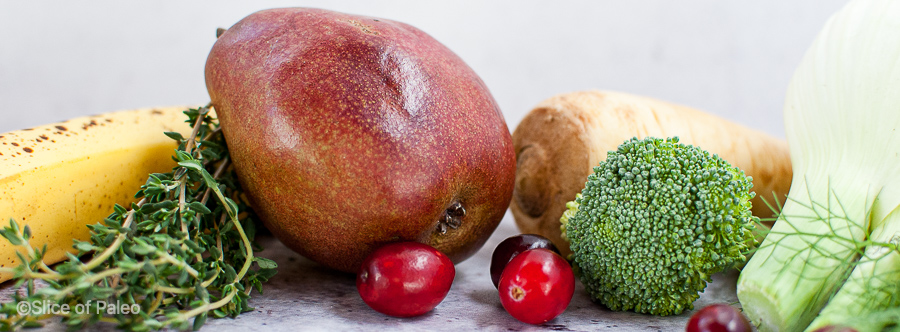
Shortbread is a delicious cookie in and of itself, but the addition of honey and rosemary brings a wonderful surprise. This paleo rosemary shortbread is the perfect offering particularly for fall and winter gatherings, or simply to enjoy with a cup of tea.
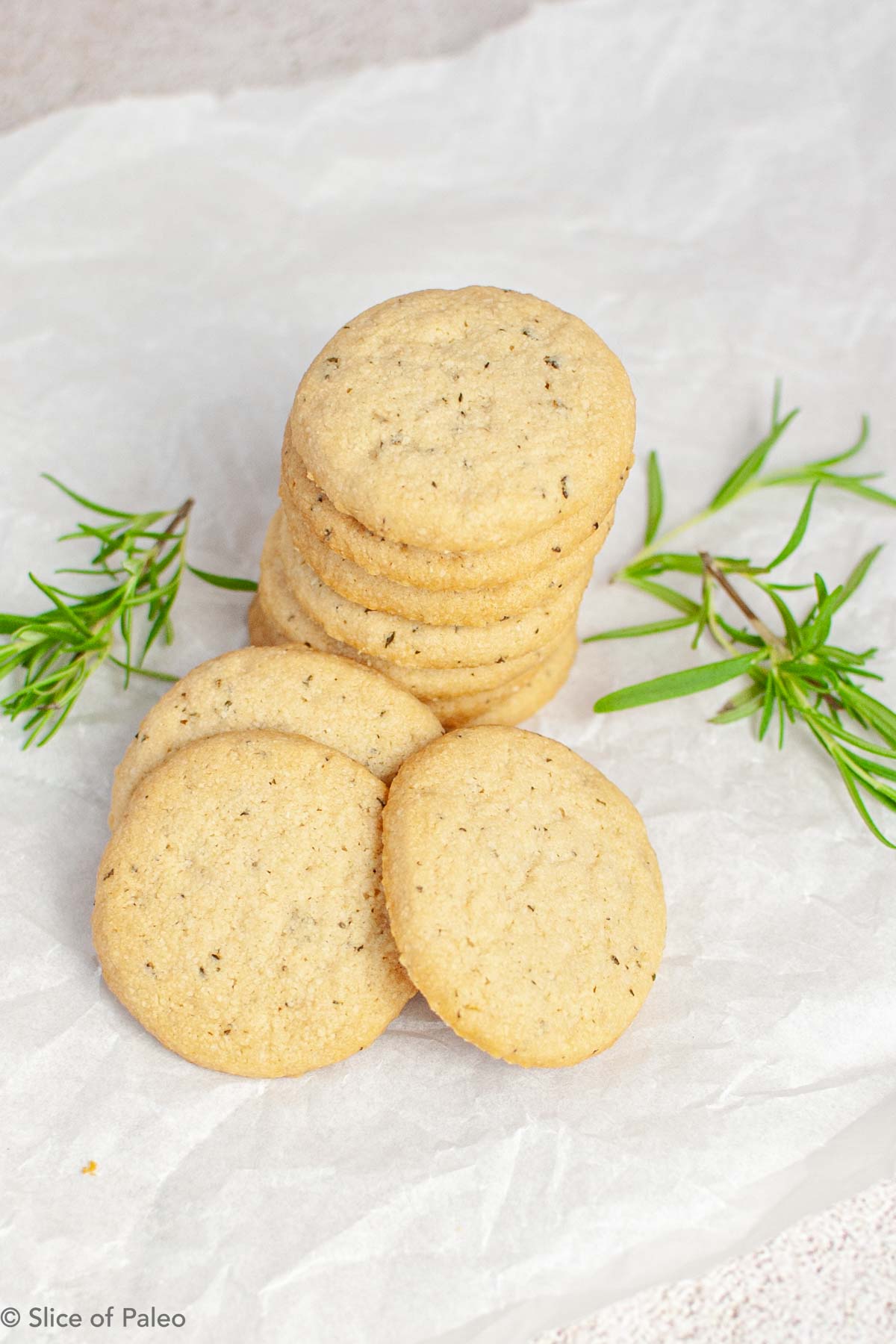
Butter vs Ghee vs Shortening
Traditionally, shortbread is made with butter. Some people on a paleo diet will consume grass-fed butter, but others will not. Ghee, or clarified butter, is a nice alternative as the casein has been removed. The taste of ghee is a bit stronger than butter, and I find that I can taste it in some recipes that don’t have a lot of ingredients. This is one of those recipes where the taste of ghee wasn’t my favorite. Palm shortening, sustainably made, can be a nice alternative. It has little flavor and fills the role of butter. It can also help cookies maintain their shape.
How to Make Paleo Rosemary Shortbread
This recipe has easy steps with some wait time in between for chilling the dough. The first step is to wash and dry the fresh rosemary, pull off the leaves and finely chop into small pieces. Then combine all of the dry ingredients in a bowl, which includes the almond and tapioca flours, salt, and rosemary.
In a medium sized bowl, cream together the shortening and the honey. It’s best to do this with an electric mixer and mix until it is fluffy and creamy. Finally, mix the dry ingredients with the wet and stir with a spoon until it forms a dough.
Remove the dough from the bowl and place on a piece of parchment paper. Roll it out so it forms a 10″ long log. If you pick up each end of the parchment that is parallel to the dough log, you can roll the dough back and forth in the parchment to help shape the log.
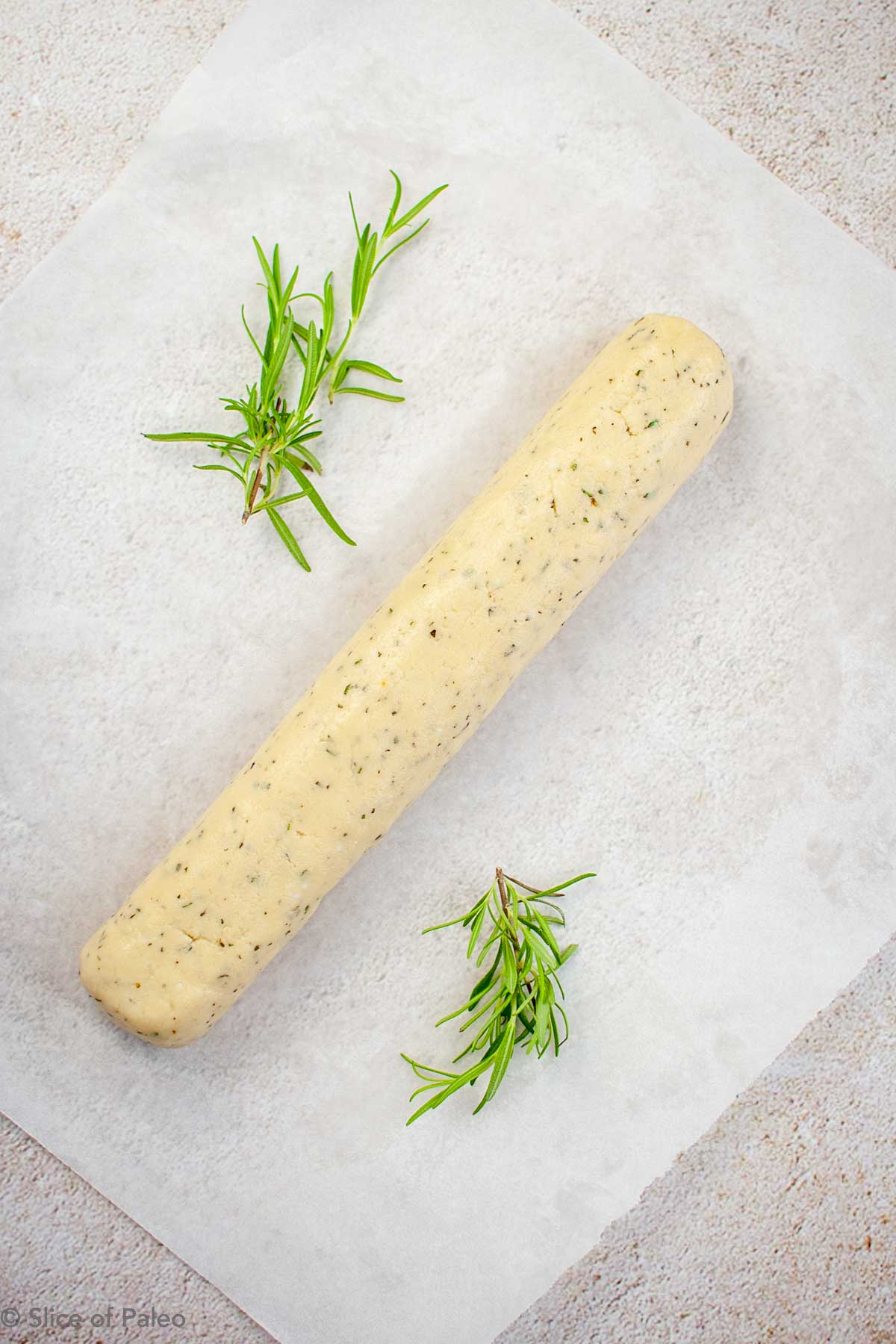
Chilling the Dough
When the dough log is the right length, wrap it in the parchment, tuck down the sides of the parchment, and place in the refrigerator to chill for 2 hours. If you plan to chill it overnight, it’s best to wrap it in plastic wrap to keep the dough from drying out.
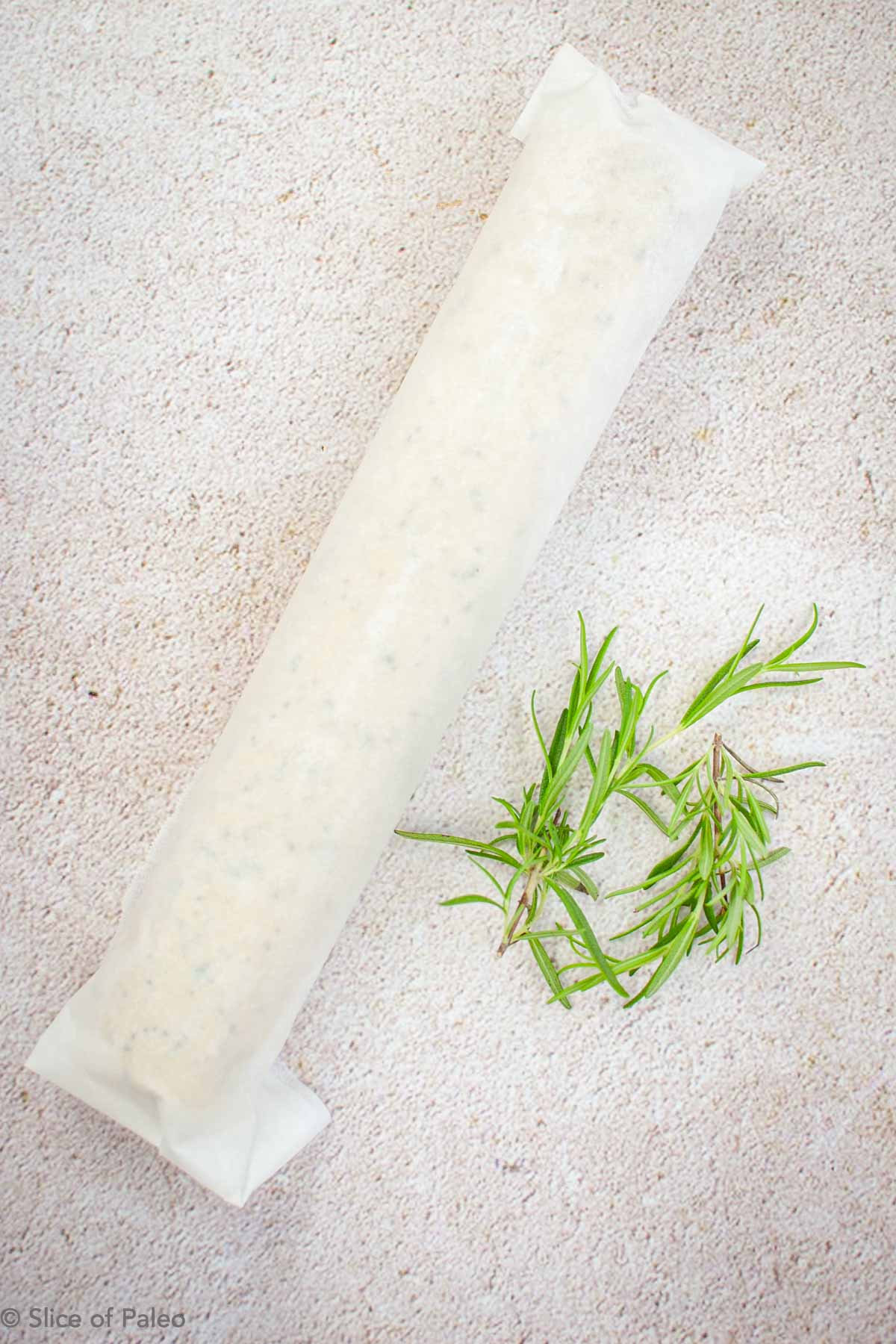
Cutting the Dough and Chilling Again
After the dough has chilled, remove it from the refrigerator and slice into pieces. You can use a knife or dough scraper to cut the log. Aim for cutting 20 pieces that are 1/2″ thick. Place each piece on a parchment lined baking sheet. You may need to reshape the dough pieces so they are round and flat, like a checker. Then place the baking sheet in the refrigerator and chill for an additional 30 minutes. Chilling again ensures that the cookies keep their shape.
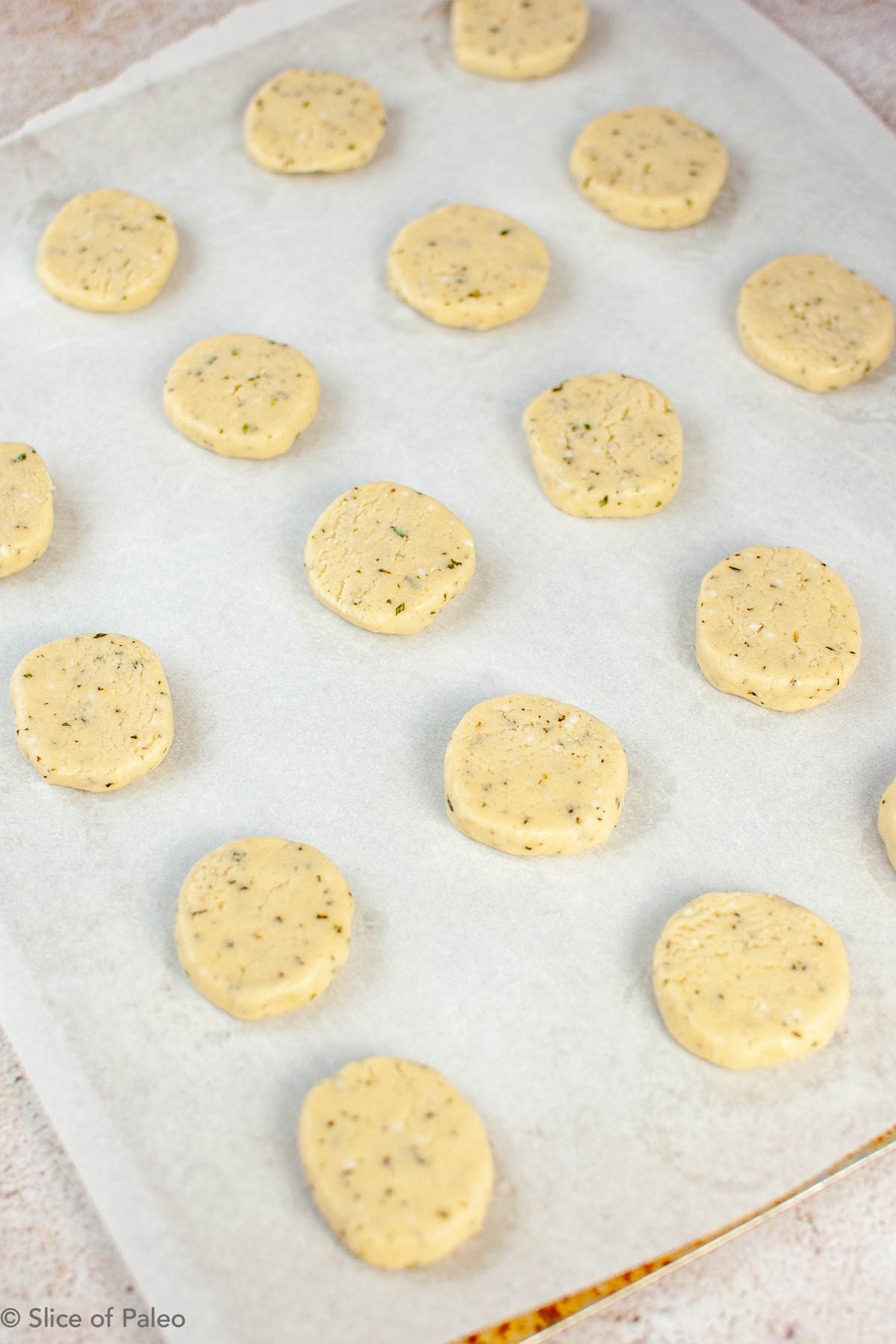
Preheat the oven at 300 degrees. After the cookie dough circles have chilled, remove from the refrigerator and place on a middle rack in the oven. Bake your paleo rosemary shortbread for 20 to 22 minutes, just until the edges start to brown.
Remove from the oven and let sit for about 5 minutes. Then slide the cookies from the parchment onto a cooling rack and let cool completely.
Take time to enjoy each bite. Try with a cup of tea or coffee, a good book or a friend. Enjoy!
Storage
Store your paleo rosemary shortbread cookies in a cookie tin at room temperature. Or store in an airtight container in the refrigerator or freezer.

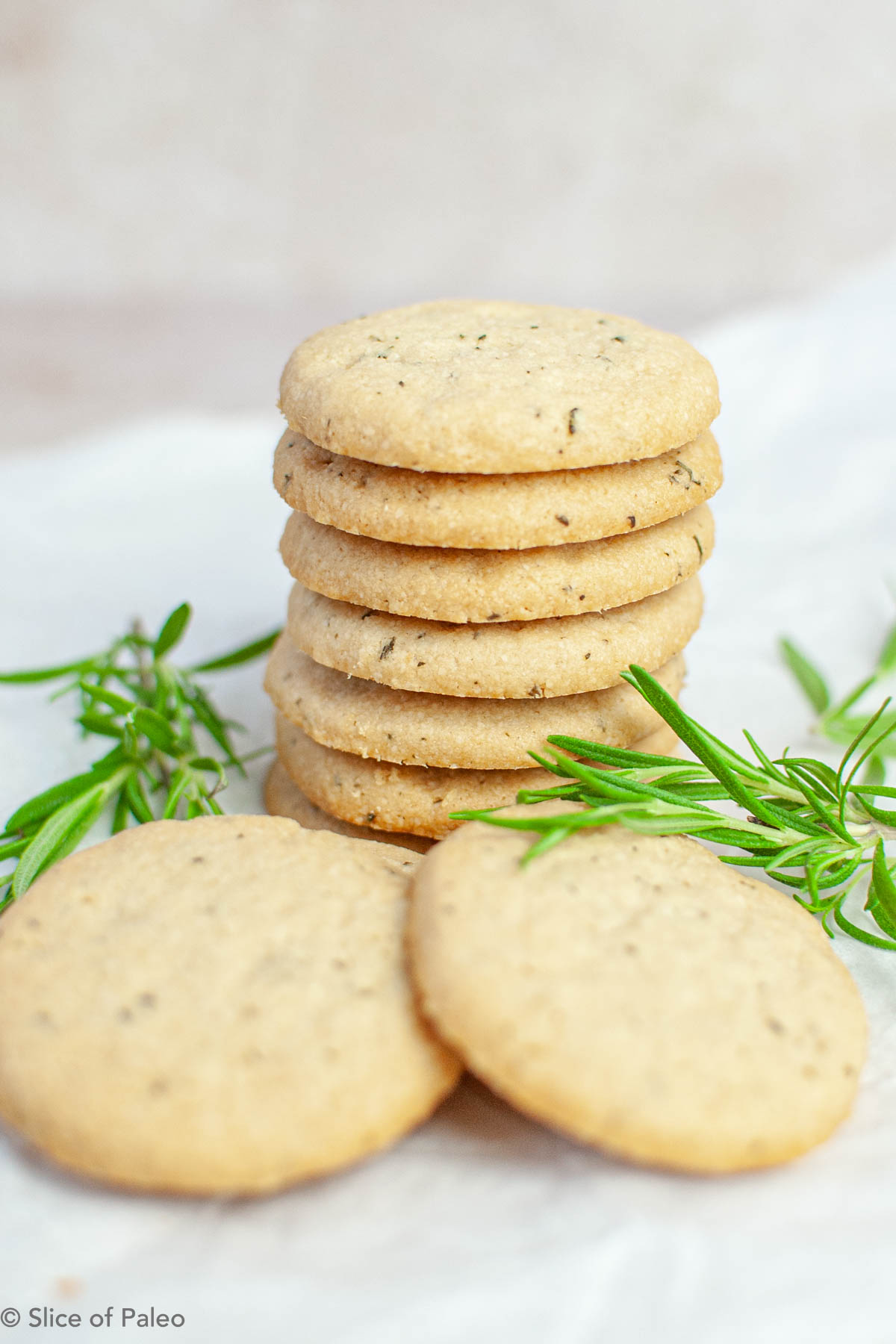
Paleo Rosemary Shortbread
Ingredients
Equipment
Method
- Rinse and dry fresh rosemary and remove leaves from stem. Mince the leaves by repeatedly chopping until you have very small pieces.
- Combine almond flour, tapioca flour, kosher salt, and minced rosemary in a bowl and set aside.
- Measure palm shortening and honey and place in a medium sized bowl. Using an electric mixer, mix until fluffy and creamy.
- Add the flour mix to the shortening honey mixture. Stir with a spoon until it is combined and comes together into a dough.
- Place dough on a sheet of parchment paper. Roll out into a log shape approximately 10 inches long. It helps to pick up each side of the parchment and let the dough roll back and forth to help shape it into a log.
- Wrap the parchment around the dough log and tuck down the sides like a present and place in the refrigerator for a minimum of 2 hours and up to 24 hours. If chilling for more than a few hours, wrap in plastic wrap for extra protection so the dough doesn't dry out.
- Remove dough from the refrigerator. Using a knife or pastry scraper, cut the dough into pieces about 1/2" thick, aiming to cut about 20 pieces (if the dough crumbles, let sit at room temperature until it is pliable.) If needed, use your fingertips to reshape each piece into a circle, then place on a parchment lined baking sheet.
- Place the baking sheet in the refrigerator for 30 minutes. This will help the cookies maintain much of their shape while baking. Preheat the oven to 300°F degrees.
- Remove the baking sheet from the refrigerator and place in the middle rack of the oven. Bake for 20-22 minutes, until edges start to brown. Remove from the oven and let sit for 5 minutes, then slide the cookies off the parchment and onto a cooling rack. Let rest until completely cooled.
- To store, place cookies in a cookie tin at room temperature for up to 1 week. They store nicely in an airtight container the refrigerator for up to 10 days or the freezer for up to 1 month. Enjoy!